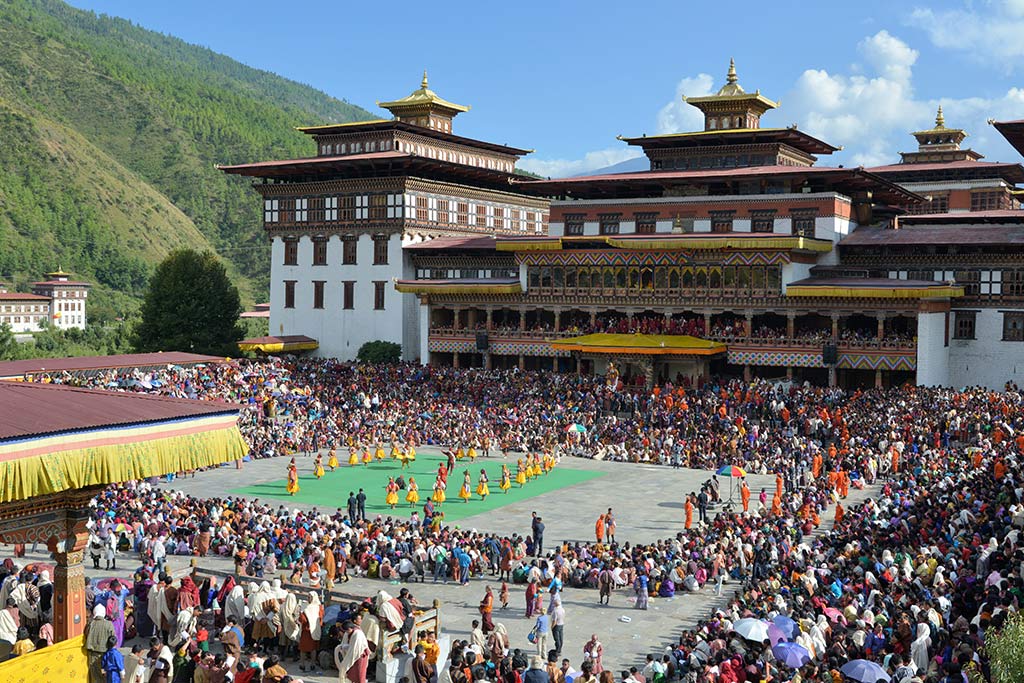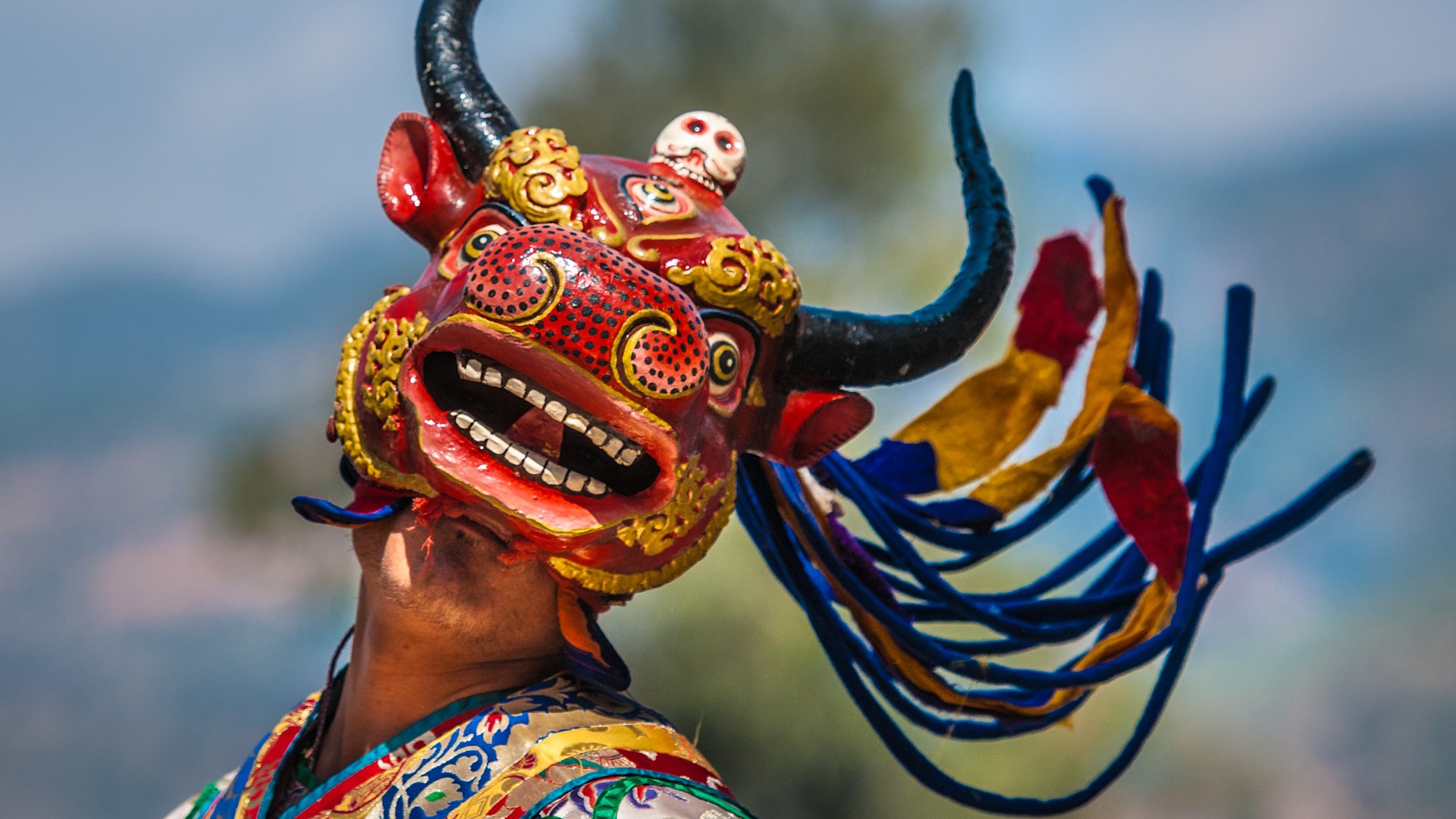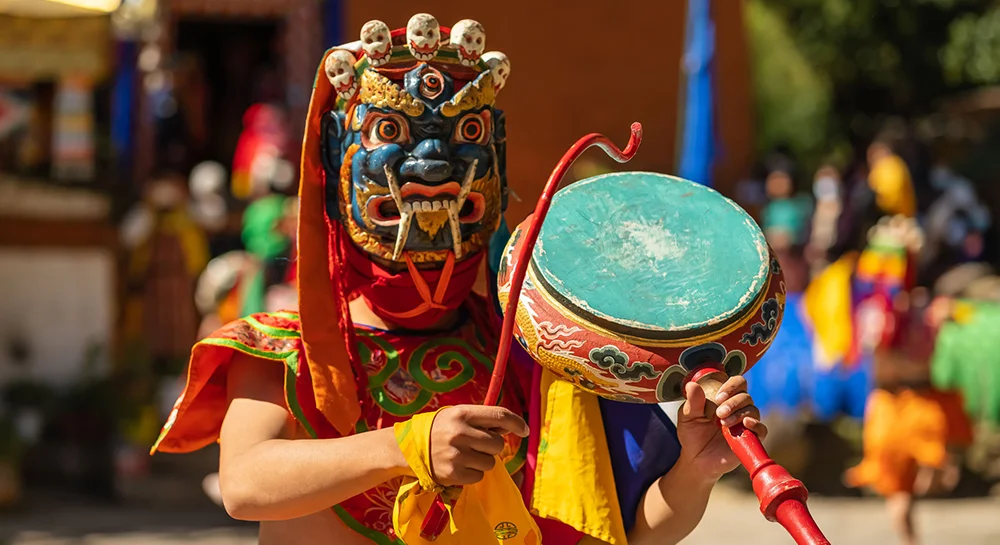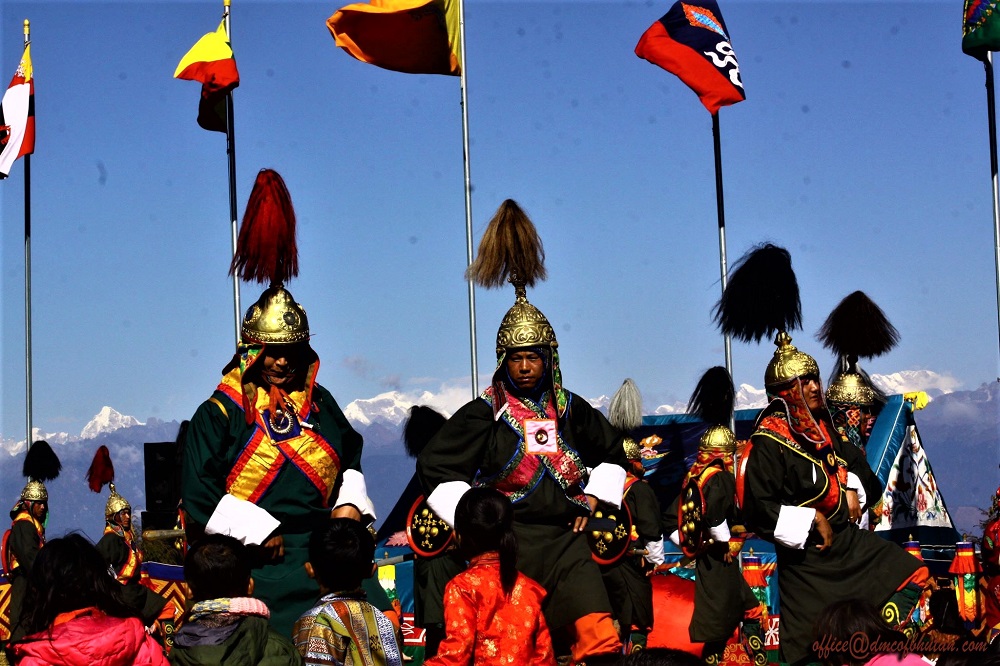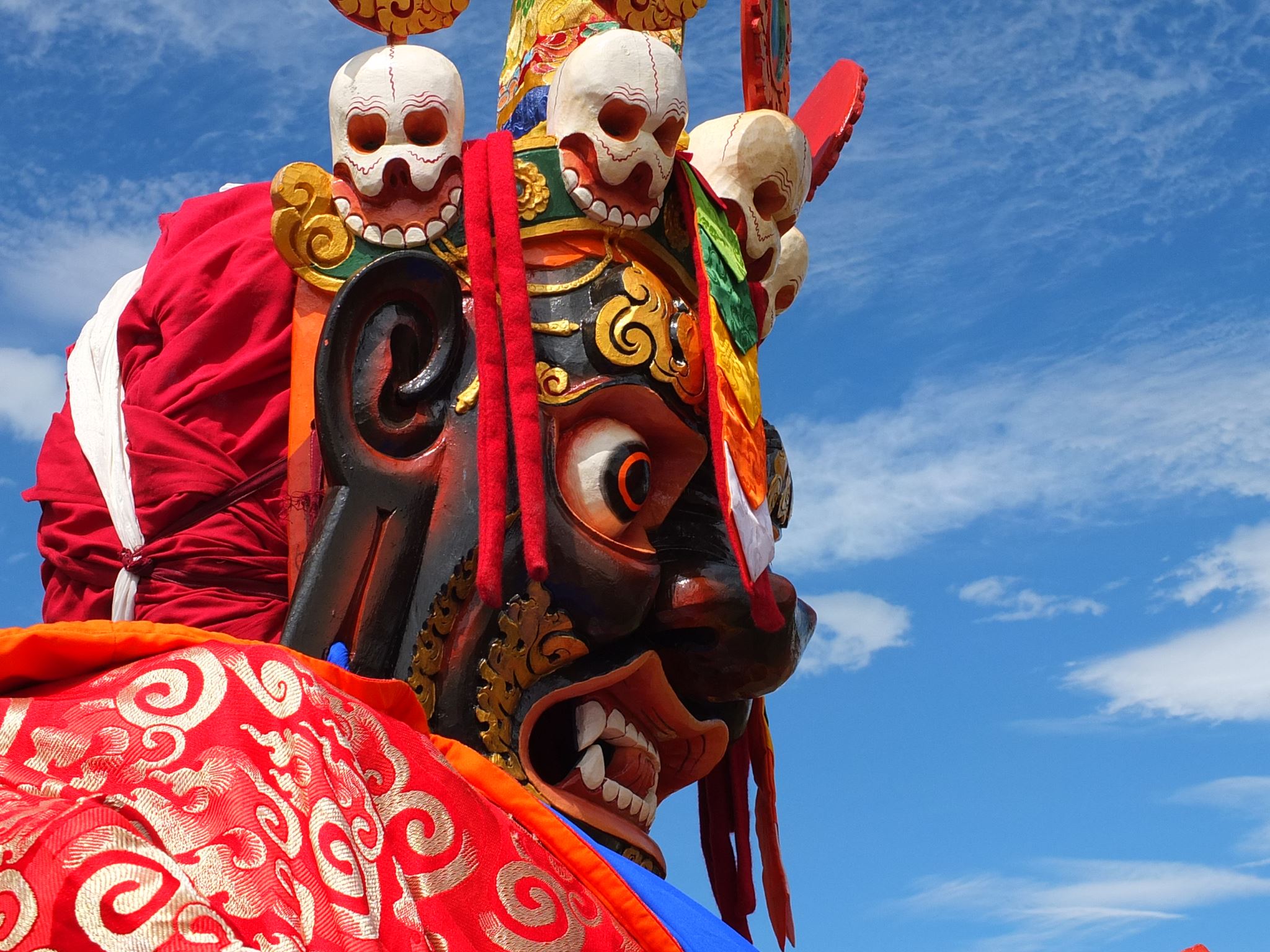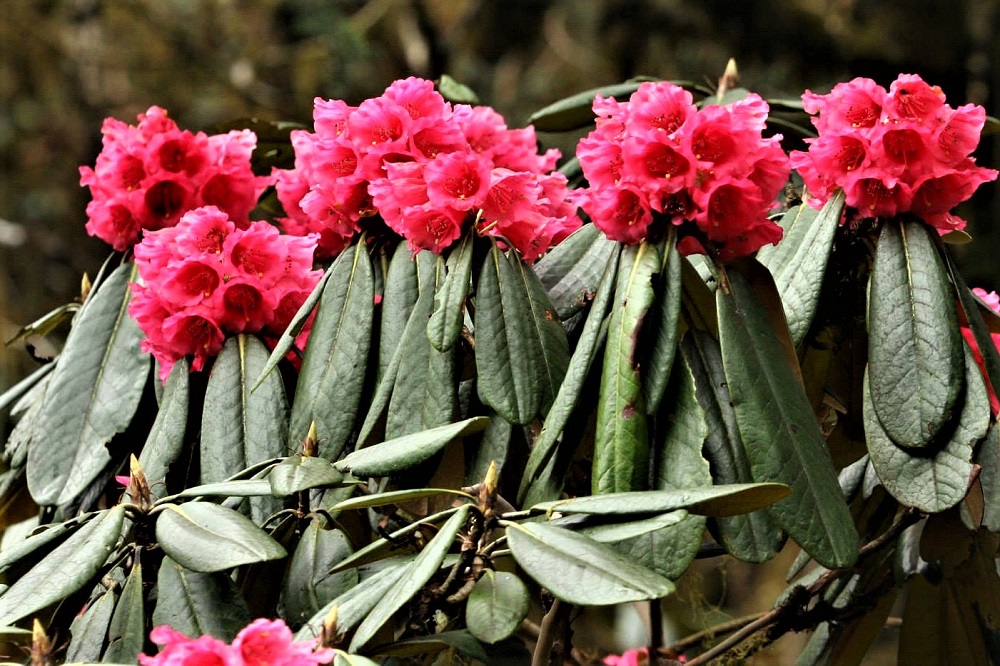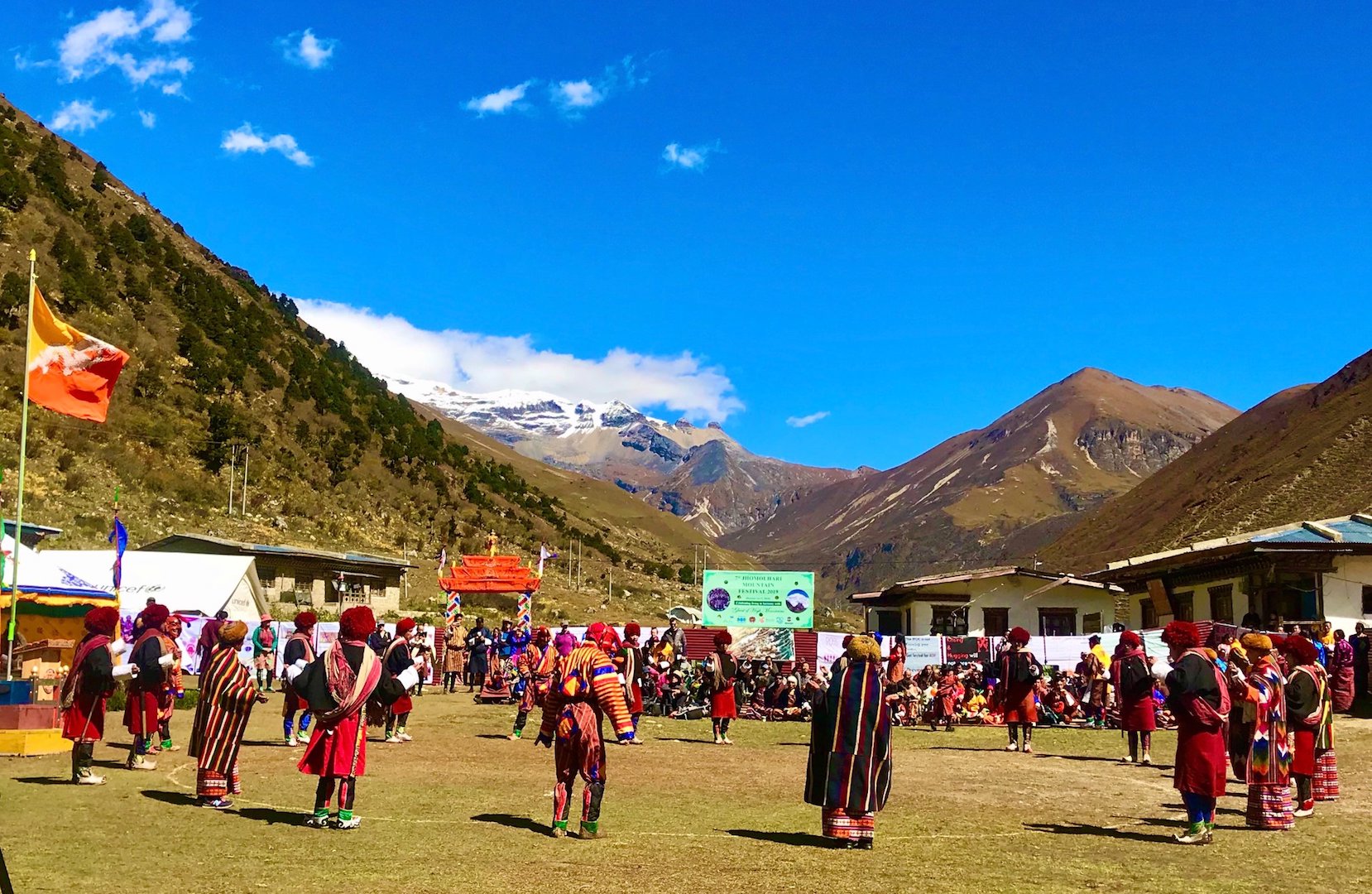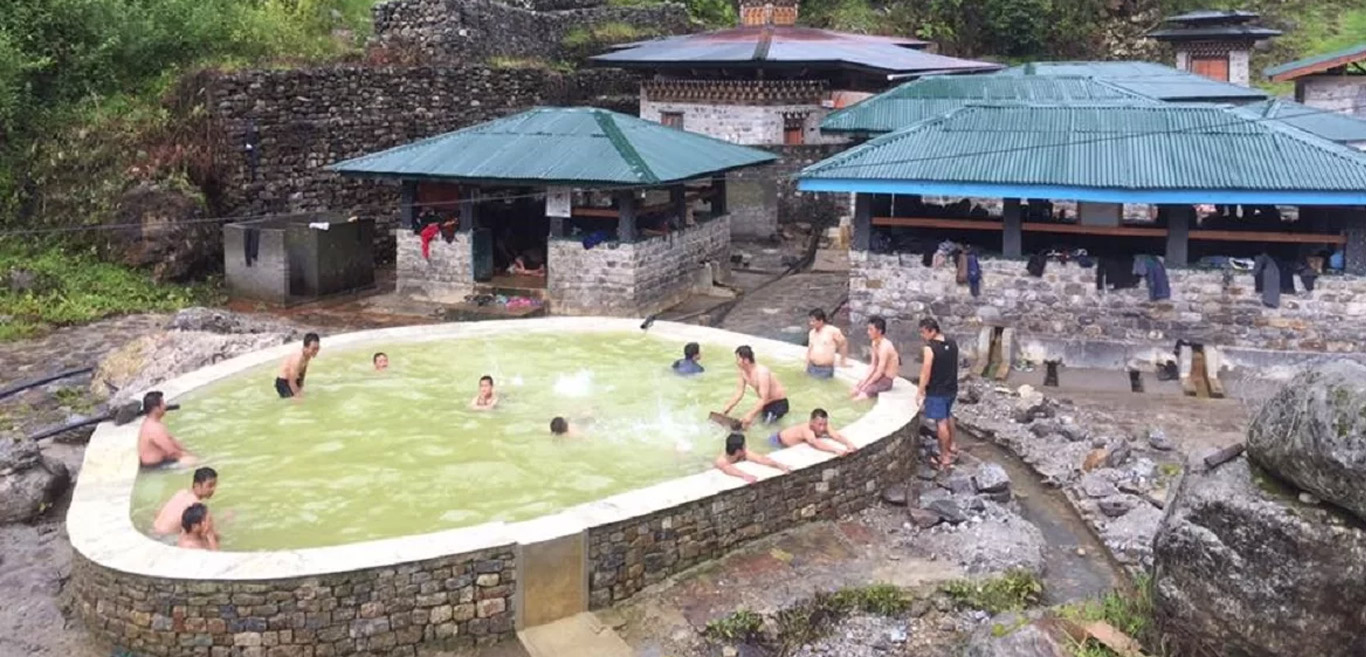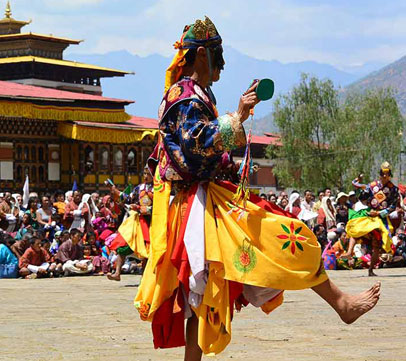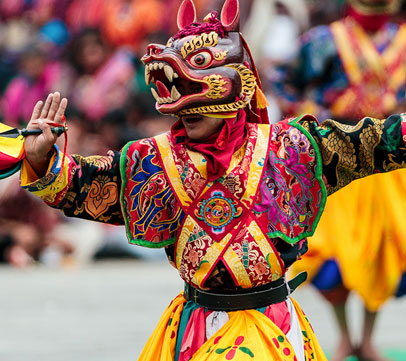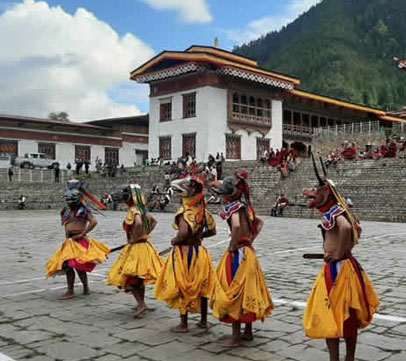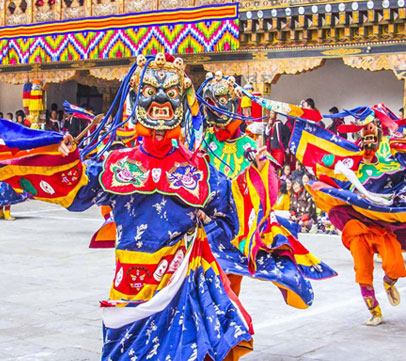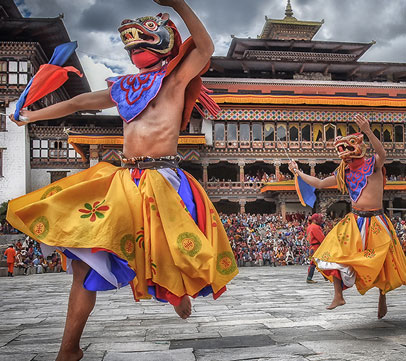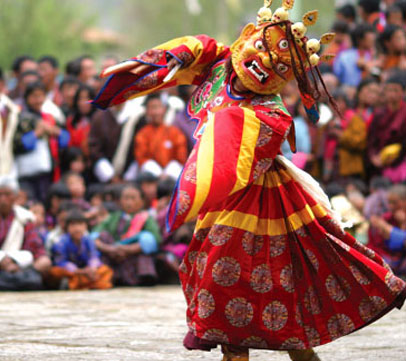Overview:
The Punakha Tshechu Festival Tour is a captivating journey into Bhutan’s spiritual and cultural heritage. Held annually in the historic Punakha Dzong, this festival is one of the most significant religious celebrations in Bhutan, featuring sacred mask dances, vibrant rituals, and storytelling performances that depict the life of Guru Rinpoche. This 8-day tour combines the grandeur of the Punakha Tshechu with Bhutan’s breathtaking landscapes, ancient monasteries, and unique traditions.
Day 1: Arrival at Bagdogra – Transfer to Phuentsholing
- Arrive at Bagdogra Airport: You’ll touch down at Bagdogra Airport, your gateway to the eastern Himalayas.
- Transfer to Phuentsholing: The road journey from Bagdogra to Phuentsholing takes you through lush tea gardens and picturesque countryside, offering a glimpse of the natural beauty to come.
- Visit Zangto Pelri Lhakhang: This temple, nestled in Phuentsholing, is a peaceful sanctuary adorned with intricate Bhutanese artwork and offers a serene introduction to Bhutanese culture.
- Overnight in Phuentsholing: Accommodation options in Phuentsholing range from comfortable hotels to cozy guesthouses, providing a welcoming start to your Bhutanese
Day 2: Phuentsholing to Thimphu
- Complete immigration formalities: Crossing into Bhutan involves completing necessary immigration paperwork, which is typically handled efficiently.Drive to Thimphu through scenic landscapes: The journey traverses winding mountain roads and verdant valleys, with occasional stops to admire cascading waterfalls and panoramic vistas.
- Stop at Chuzom: Here, the confluence of the Thimphu and Paro rivers is marked by prayer flags fluttering in the breeze, offering a serene moment to appreciate Bhutan’s natural beauty.
- Explore Thimphu city: Bhutan’s capital blends tradition with modernity, where ancient D’zongs (fortresses) stand beside bustling markets and contemporary cafes, providing insight into Bhutan’s unique cultural fusion.
- Overnight in Thimphu: Accommodation in Thimphu ranges from boutique hotels to cozy lodges, ensuring a comfortable stay admits the capital’s charms.
Day 3: Thimphu Sightseeing
- Visit National Textile Museum: Discover Bhutan’s intricate weaving traditions and admire displays of colorful textiles, each telling a story of local craftsmanship and cultural heritage.
- See the Buddha Dordenma statue: Standing tall at 169 feet, this bronze statue of Buddha overlooks Thimphu Valley, offering panoramic views and a serene atmosphere for reflection.
- Explore the Memorial Chorten: Dedicated to world peace and honoring Bhutan’s third king, this stupa is a center for religious ceremonies and a place for locals to gather and
- Visit Thimphu’s weekend market: Immerse yourself in the vibrant sights and sounds of Bhutanese culture, as locals gather to sell fresh produce, handicrafts, and delicious street food.
- Witness traditional archery matches: An integral part of Bhutanese culture, archery tournaments offer a glimpse into the country’s sporting traditions and community
- Overnight in Thimphu: As the sun sets over Thimphu, unwind in your accommodation, reflecting on a day filled with cultural immersion and scenic wonders.
Day 4: Thimphu to Punakha
- Drive to Punakha via Dochu La Pass: At an altitude of 10,000 feet, Dochu La Pass offers breathtaking views of the eastern Himalayan peaks on clear days, with 108 chortens (stupas) adding to the spiritual ambiance.
- Visit Punakha Dzong: Set at the confluence of the Mo Chhu and Pho Chhu rivers, this ancient fortress-monastery is known for its intricate woodwork and beautiful setting, making it a highlight of Bhutanese architecture.
- Walk across Punakha Suspension Bridge: Spanning the Po Chhu River, this suspension bridge provides panoramic views of Punakha Valley and is a favorite spot for photography enthusiasts and nature lovers.
Punakha Tshechu is one of Bhutan’s most celebrated and colorful religious festivals, held annually at Punakha Dzong, the majestic fortress at the confluence of the Pho and Mo rivers. This Tshechu is deeply rooted in Bhutanese culture and is dedicated to Guru Rinpoche (Padmasambhava), the revered saint who is credited with introducing Buddhism to Bhutan and the Himalayan region. It is a time for local communities to come together to celebrate their spiritual traditions, cultural heritage, and the beauty of Bhutanese life.
Key Features of Punakha Tshechu:
Dedication to Guru Rinpoche (Padmasambhava):
- Punakha Tshechu is dedicated to Guru Rinpoche, who is believed to have blessed Bhutan with his teachings and spiritual guidance. The festival celebrates his life and contributions to Buddhism, reflecting the profound spiritual significance of his presence in Bhutanese history.
Sacred Mask Dances (Cham):
- The highlight of Punakha Tshechu is the performance of traditional Cham dances, which are dramatic and symbolic dances performed by monks and laypeople. These dances are believed to purify the environment, ward off evil, and bring blessings to the community.
- The dancers wear colorful masks and elaborate costumes that represent various deities, spirits, and religious figures from Bhutanese Buddhist mythology. Each dance tells a story with moral and spiritual significance.
Unfurling of the Thongdrel:
- A significant ritual during Punakha Tshechu is the unfurling of the Thongdrel, a large and intricate thangka (religious painting) depicting Guru Rinpoche. The Thongdrel is unveiled early in the morning to allow devotees to receive blessings as they gather around to view the sacred image.
- It is believed that viewing the Thongdrel brings immense blessings and purifies the viewer’s sins.
Community Participation:
- The festival is an important cultural event for the local community. Villagers from Punakha and surrounding areas attend the festival, often dressed in their finest traditional clothes. The community participates in various rituals, dances, and prayers, making it a time of collective celebration and devotion.
- The festival brings together people of all ages, from children to elders, who engage in the festivities with joy and reverence.
Religious Ceremonies and Prayers:
- Throughout the festival, monks perform various religious ceremonies and prayers to invoke blessings for peace, prosperity, and protection. These ceremonies are central to the Tshechu, reinforcing its spiritual significance and purpose.
- Offerings and prayers are made for the wellbeing of the nation, and the festival serves as an occasion for both reflection and celebration.
Punakha Dzong – The Venue:
- The festival is held at Punakha Dzong, one of Bhutan’s most beautiful and historically significant dzongs. The dzong’s stunning architecture and serene location at the confluence of two rivers provide a majestic backdrop for the celebrations.
- The Punakha Dzong holds a special place in Bhutanese history as the site where the first King of Bhutan was crowned, and it remains a symbol of spiritual and political significance.
When It Happens:
- Punakha Tshechu typically takes place in March or April, coinciding with the spring season, and is one of the main events in Bhutan’s Tshechu season. The dates are determined by the lunar calendar, which governs the timing of all religious festivals in Bhutan.
Cultural Importance:
- Punakha Tshechu is an important celebration of Bhutan’s rich cultural and religious heritage. It is not just a religious festival but also an occasion for people to come together, reaffirm their faith, and preserve traditional practices.
- The festival serves as an opportunity for younger generations to learn about Bhutan’s spiritual beliefs, history, and cultural identity.
- Overnight in Punakha: Accommodation in Punakha offers tranquility amidst lush paddy fields and is often characterized by traditional Bhutanese architecture, providing a peaceful retreat after a day of exploration.
Day 5: Punakha to Paro
- Travel to Paro: Nestled in a picturesque valley, Paro is famous for its historical landmarks and scenic beauty, offering a serene ambiance that captivates
- Visit Chimi Lhakhang (Temple of Fertility): Dedicated to the eccentric “Divine Madman,” this temple is renowned for its fertility blessings and vibrant murals, reflecting Bhutan’s unique blend of spirituality and folklore.
- Explore Paro town: Wander through quaint streets lined with traditional Bhutanese houses, handicraft shops, and cozy cafes, providing an authentic glimpse into local
- See the National Museum (Ta Dzong): Housed in a former watchtower overlooking Paro Dzong, the museum showcases Bhutanese art, relics, and cultural artifacts, offering insights into the kingdom’s rich history.
- Visit Paro Dzong: Also known as Rinpung Dzong, this fortress-monastery is an architectural marvel and serves as an administrative center and religious site, with stunning frescoes and intricate woodwork.
- Overnight in Paro: Accommodation in Paro ranges from luxury resorts to charming guesthouses, each offering warm Bhutanese hospitality amidst tranquil
Day 6: Paro Sightseeing
- Hike to Taktsang Monastery (Tiger’s Nest): Perched on a cliffside at 10,000 feet, Taktsang Monastery is a revered pilgrimage site and a marvel of Bhutanese architecture, offering panoramic views and a spiritual journey.
Alternative: Visit Haa Valley and Chele La Pass
- Explore Haa Valley: Journey to the tranquil Haa Valley, known for its pristine natural beauty, traditional Bhutanese architecture, and rich cultural heritage. Visit local temples and monasteries, and interact with friendly villagers to experience rural Bhutanese life.
- Chele La Pass: Located at an altitude of 3,988 meters (13,084 feet), Chele La Pass offers stunning panoramic views of the Himalayan mountain range and the valleys below.
Take in the breathtaking scenery and enjoy moments of serenity amidst the high mountain landscapes.
- Overnight in Paro: Return to Paro in the evening, where you can relax and reflect on the day’s adventures amidst the peaceful surroundings of this picturesque valley.
Day 7: Paro to Phuentsholing
- Drive back to Phuentsholing: Retrace your journey through Bhutan’s picturesque landscapes, reflecting on the memories created during your exploration of this enchanting kingdom.
- Evening exploration of Phuentsholing market: Browse local markets for unique souvenirs, handicrafts, and mementos, offering a last opportunity to immerse yourself in Bhutanese culture.
- Overnight in Phuentsholing: Accommodation in Phuentsholing offers comfort and convenience, providing a peaceful setting to conclude your Bhutanese adventure.
Day 8: Departure from Phuentsholing to Bagdogra
- Transfer to Bagdogra Airport for departure: Bid farewell to Bhutan as you embark on your journey back to Bagdogra Airport, carrying cherished memories and experiences from the Land of the Thunder Dragon.
Additional Activities that can be Added:
- River Rafting
- Mountain Biking
- Archery
- Cycling
- Cultural Tours with Adventure Elements
- White Water Rafting
- Chimi Lhakhang Hike
- Camping and Trekking
- River Kayaking



